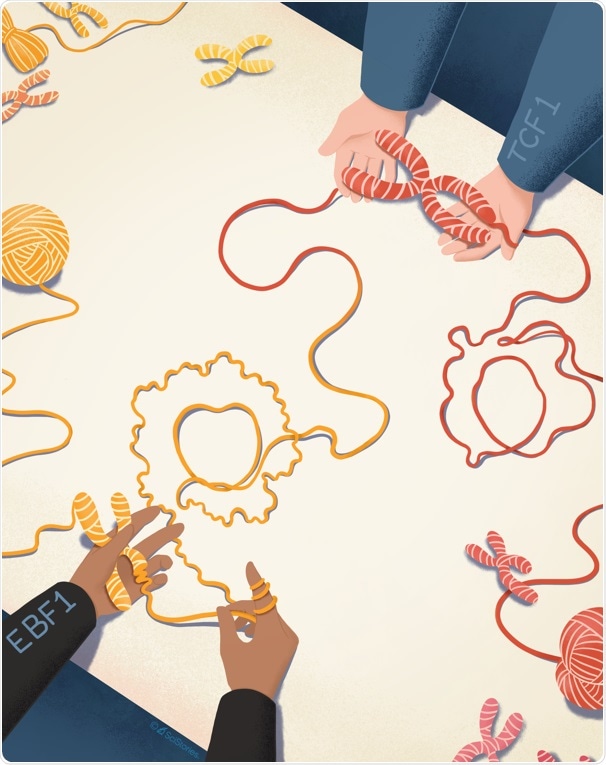Although gene mutations can result in drug resistance, scientists in the Perelman School of Medicine at the University of Pennsylvania have found a vital, non-genetic version that could also boost resistance to targeted treatment in T cell leukemia, which is a kind of blood cell cancer. Their results were published in the journal Molecular Cell.

If you stretched the DNA fiber packed inside of a single cell, it would reach six feet long from end to end—that’s like fitting a ball of yarn twice the size of Manhattan into a tennis ball. Penn researchers have discovered that the misfolding of DNA can reposition transcription factors and lead to cancer drug resistance. Image Credits: Penn Medicine.
If the DNA fiber packed inside of a single cell is stretched, it would reach six feet long from end to end—like fitting a yarn ball double the size of Manhattan into a tennis ball. The strand needs to be folded rightly for the cell to function properly. Genome misfolding is associated with several diseases, as well as cancer.
Genome folding controls where the genes are in the space of the cell and is important for proper control of gene activity. We’ve discovered that T leukemic cells can change the folding of their genome to adapt to targeted therapy and evade its anti-cancer effects.”
R. Babak Faryabi PhD, Assistant Professor, Pathology and Laboratory Medicine, Penn Medicine
Faryabi also headed the study with Yeqiao Zhou, who is a Genetics and Epigenetics graduate student.
One of the most common reasons to develop resistance towards cancer treatments is the attainment of new genetic mutations, which allow cancer cells to side-step the treatment effect.
On the other hand, epigenetic adaptations are chemical alterations and substitute genome packaging, which result in the formation of various cell types in the human body, regardless of their origin from a similar genetic code. Now, such adaptations are developing as equally crucial contributors to the resistance of cancer treatment.
To date, it has been ambiguous whether and how cancer cells alter their genome folding—an epigenetic regulator of gene activity—to build resistance towards cancer medicines.
Faryabi and collaborators employed the newest technologies to optically and biochemically analyze T leukemic cells and their resistance to a set of drugs known as Notch inhibitors. Notch is one of the most often mutated genes in T cell leukemia.
The scientists found widespread alterations in the genome folding of cells that showed resistance to Notch inhibitors, and they discovered that these genome refolding events were motivated by the repositioning of EBF1—a transcription factor needed for the generation of B cells at the expense of T cells.
Transferring EBF1 to a different location inside the cancerous T cell space results in its activation. Consecutively, EBF1 modifies the folding at different parts of the genome and finally triggers B cell genes, conferring resistance to Notch inhibitors, when there is no genetic mutation.
The consequences of the results are threefold: Now, Faryabi and his team understand the supporting mechanism of epigenetic adaptation in this type of cancer in unparalleled detail.
Therefore, clinicians may now be capable of using those results to better determine which patients may get resistant to treatment. And assessment for epigenetic alterations needs to complement the already present genetic tests to completely implement a personalized therapy strategy for patients, as stated by Faryabi.
Sequencing the genome of these patients, in this case, would not be informative. But now, we can use existing technology to look at the location of genes inside a patient’s cell, and we can potentially predict the cell’s behavior in response to the treatment.”
R. Babak Faryabi, PhD, Assistant Professor, Pathology and Laboratory Medicine, Penn Medicine
Source:
Journal reference:
Zhou, Y., et al. (2022) EBF1 nuclear repositioning instructs chromatin refolding to promote therapy resistance in T leukemic cells. Molecular Cell. doi.org/10.1016/j.molcel.2022.01.015.